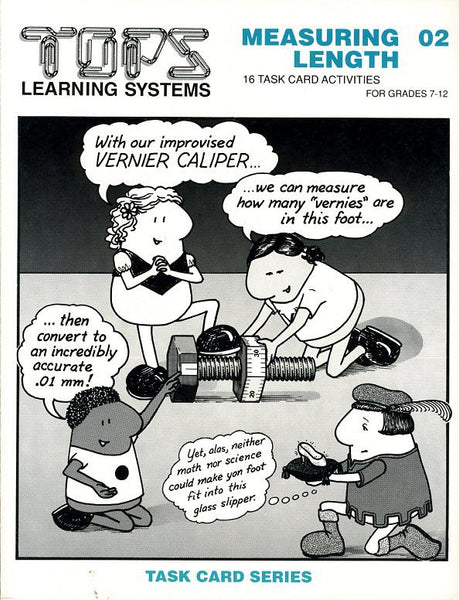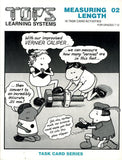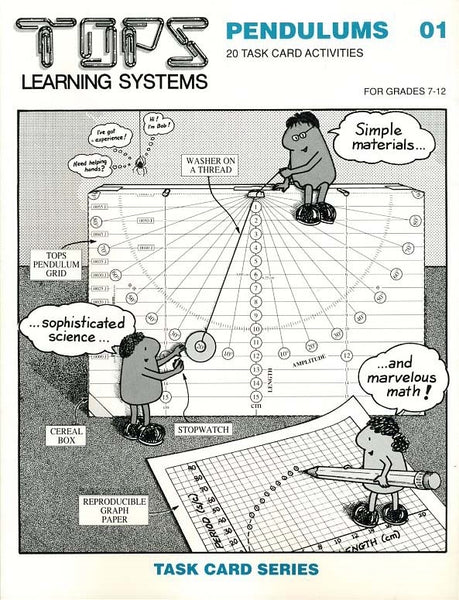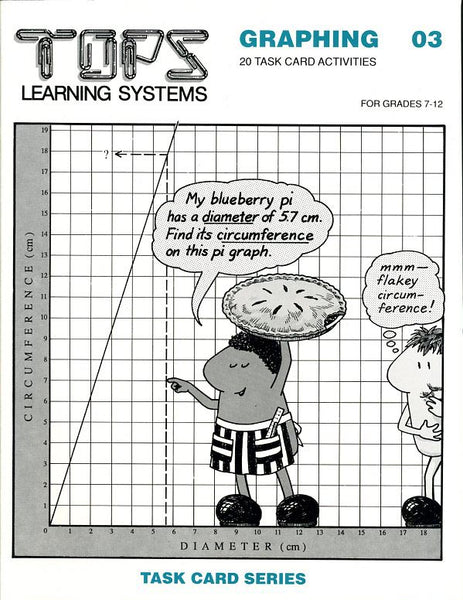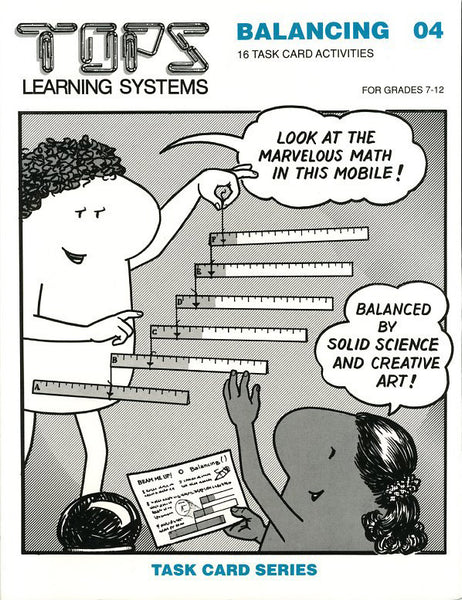#02 Measuring Length (grades 6-10)
Regular price $19.95
More Information – click any of the links below to learn more about this title
Click here for a complete list of materials and convenient shopping list.
box paper clips, scissors, index cards (optional), adding-machine tape, clear tape, string clean empty cans, 15 ounce size is best, masking tape, notebook paper, state road maps, pennies, calculators, 1/2 inch inside-diameter hex-nuts and bolts with flat undersides, about 1 inch long, white glue, straight pins, small piece aluminum foil
- Lesson 1: To measure length with thumb widths, paper clips and centimeters. To evaluate each unit as a measuring standard.
- Lesson 2: To define the decimal equivalents of metric prefixes, and use them in combination with other units of measure.
- Lesson 3: To get acquainted with meters, centimeters, and millimeters. To make an accurate meter tape to use in later activities.
- Lesson 4: To compare the length of a kilometer with the length of a mile.
- Lesson 5: To learn how to read a ruler accurately by estimating the last digit.
- Lesson 6: To distinguish between certain figures and uncertain figures. To appreciate that no measurement is exact.
- Lesson 7: To practice reading metric scales calibrated in centimeters and millimeters.
- Lesson 8: To agree with a friend, within acceptable limits of uncertainty, where the hairline crosses a scale.
- Lesson 9: To practice measuring line lengths in significant figures with centimeter and millimeter rulers. To estimate uncertainty as a plus-or-minus figure.
- Lesson 10: To determine how specific body measurements conform to general body proportion equations. To work with measuring uncertainty.
- Lesson 11: To practice measuring lengths of different magnitude. To estimate uncertainty.
- Lesson 12: To measure length using a rolling can. To estimate uncertainty.
- Lesson 13: To construct a vernier caliper that accurately measures small distances.
- Lesson 14: To recalibrate the vernier caliper in metric units and use it to measure short distances.
- Lesson 15: To learn to convert units of measure by multiplying and dividing so that unwanted units cancel out.
- Lesson 16: To project vertical height along the horizontal for easy measurement. To estimate uncertainty in the projection.
National Science Education Standards (NRC 1996)
TEACHING Standards
These 16 task cards promote excellence in science teaching by these NSES criteria:
Teachers of science...
A: ...plan an inquiry-based science program. (p. 30)
B: ...guide and facilitate learning. (p. 32)
C: ...engage in ongoing assessment of their teaching and of student learning. (p. 37)
D: ...design and manage learning environments that provide students with the time, space, and resources needed for learning science. (p. 43)
CONTENT Standards
These 16 task cards contain fundamental content as defined by these NSES guidelines (p. 109).
• Represent a central event or phenomenon in the natural world.
• Represent a central scientific idea and organizing principle.
• Have rich explanatory power.
• Guide fruitful investigations.
• Apply to situations and contexts common to everyday experiences.
• Can be linked to meaningful learning experiences.
• Are developmentally appropriate for students at the grade level specified.
Unifying Concepts and Processes
NSES Framework: Systems, order, and organization • Evidence, models and explanation • Constancy, change, and measurement
Core Concepts/Processes: The metric system is a decimal-based standard of measure that the world scientific community recognizes.
Science as Inquiry (content standard A)
NSES Framework: Identify questions that can be answered through scientific investigations. • Design and conduct a scientific investigation. • Use appropriate tools and techniques to gather, analyze, and interpret data. • Develop descriptions, explanations, predictions, and models using evidence. • Think critically and logically to connect evidence and explanations. • Recognize and analyze alternative explanations and predictions. • Communicate scientific procedures and explanations. • Use mathematics in all aspects of scientific inquiry.
Core Inquiries: To read scales accurately, write all the figures you are sure about, then read between the lines to estimate the last digit.
Physical Science (content standard B)
NSES Framework: Properties of objects and materials
Core Content: Standards of measure • Metric logic • Significant figures
Science and Technology (content standard E)
NSES Framework: Abilities of technological design • Understanding about science and technology
Core Content: A vernier caliper measures distance with greater precision, more significant figures.

